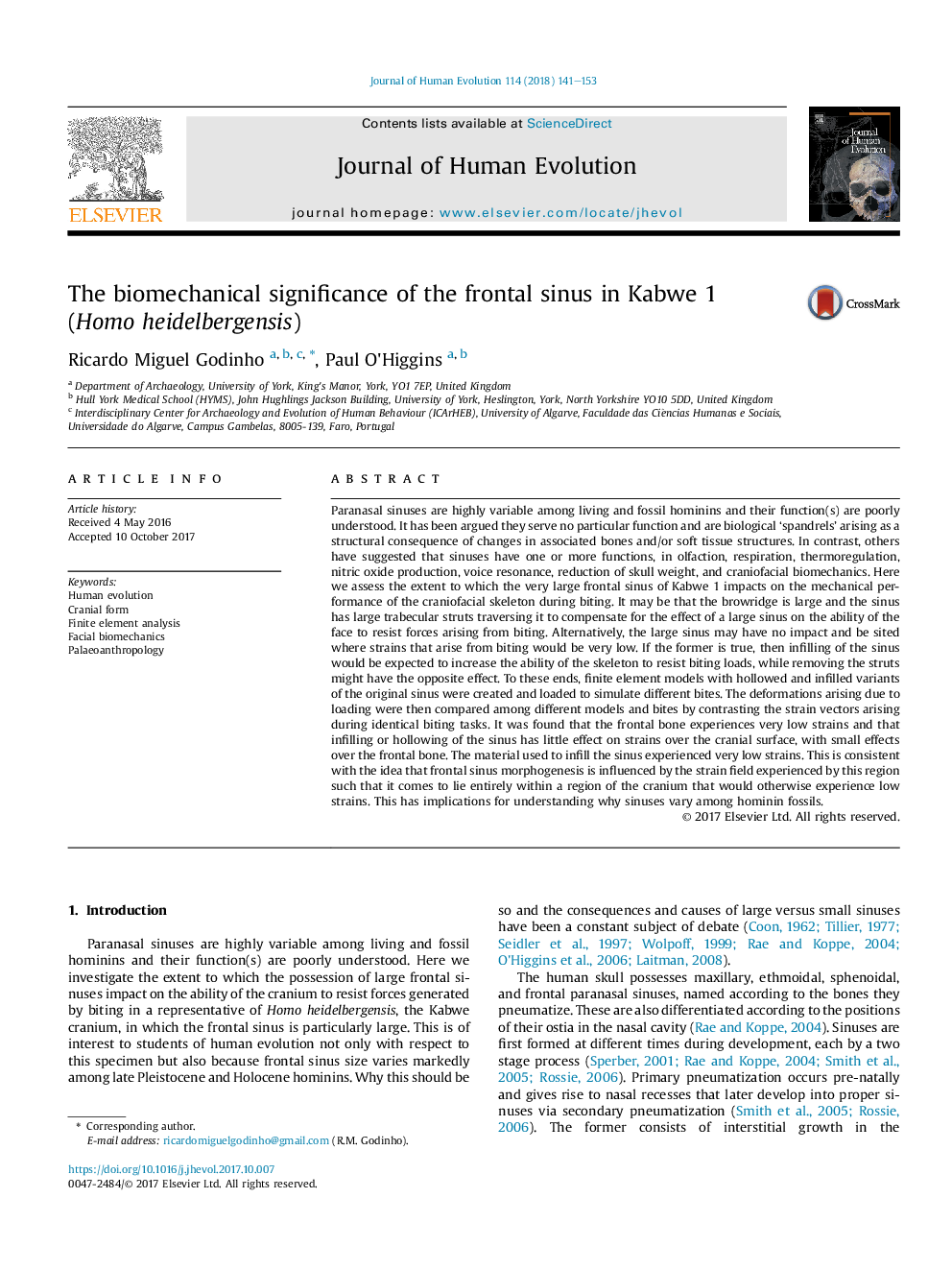| کد مقاله | کد نشریه | سال انتشار | مقاله انگلیسی | نسخه تمام متن |
|---|---|---|---|---|
| 8887348 | 1628135 | 2018 | 13 صفحه PDF | دانلود رایگان |
عنوان انگلیسی مقاله ISI
The biomechanical significance of the frontal sinus in Kabwe 1 (Homo heidelbergensis)
دانلود مقاله + سفارش ترجمه
دانلود مقاله ISI انگلیسی
رایگان برای ایرانیان
کلمات کلیدی
موضوعات مرتبط
علوم زیستی و بیوفناوری
علوم کشاورزی و بیولوژیک
بوم شناسی، تکامل، رفتار و سامانه شناسی
پیش نمایش صفحه اول مقاله

چکیده انگلیسی
Paranasal sinuses are highly variable among living and fossil hominins and their function(s) are poorly understood. It has been argued they serve no particular function and are biological 'spandrels' arising as a structural consequence of changes in associated bones and/or soft tissue structures. In contrast, others have suggested that sinuses have one or more functions, in olfaction, respiration, thermoregulation, nitric oxide production, voice resonance, reduction of skull weight, and craniofacial biomechanics. Here we assess the extent to which the very large frontal sinus of Kabwe 1 impacts on the mechanical performance of the craniofacial skeleton during biting. It may be that the browridge is large and the sinus has large trabecular struts traversing it to compensate for the effect of a large sinus on the ability of the face to resist forces arising from biting. Alternatively, the large sinus may have no impact and be sited where strains that arise from biting would be very low. If the former is true, then infilling of the sinus would be expected to increase the ability of the skeleton to resist biting loads, while removing the struts might have the opposite effect. To these ends, finite element models with hollowed and infilled variants of the original sinus were created and loaded to simulate different bites. The deformations arising due to loading were then compared among different models and bites by contrasting the strain vectors arising during identical biting tasks. It was found that the frontal bone experiences very low strains and that infilling or hollowing of the sinus has little effect on strains over the cranial surface, with small effects over the frontal bone. The material used to infill the sinus experienced very low strains. This is consistent with the idea that frontal sinus morphogenesis is influenced by the strain field experienced by this region such that it comes to lie entirely within a region of the cranium that would otherwise experience low strains. This has implications for understanding why sinuses vary among hominin fossils.
ناشر
Database: Elsevier - ScienceDirect (ساینس دایرکت)
Journal: Journal of Human Evolution - Volume 114, January 2018, Pages 141-153
Journal: Journal of Human Evolution - Volume 114, January 2018, Pages 141-153
نویسندگان
Ricardo Miguel Godinho, Paul O'Higgins,